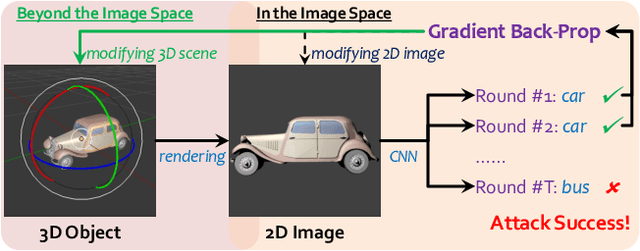Chi Keung Tang
Group Collaborative Learning for Co-Salient Object Detection
Mar 15, 2021



Abstract:We present a novel group collaborative learning framework (GCoNet) capable of detecting co-salient objects in real time (16ms), by simultaneously mining consensus representations at group level based on the two necessary criteria: 1) intra-group compactness to better formulate the consistency among co-salient objects by capturing their inherent shared attributes using our novel group affinity module; 2) inter-group separability to effectively suppress the influence of noisy objects on the output by introducing our new group collaborating module conditioning the inconsistent consensus. To learn a better embedding space without extra computational overhead, we explicitly employ auxiliary classification supervision. Extensive experiments on three challenging benchmarks, i.e., CoCA, CoSOD3k, and Cosal2015, demonstrate that our simple GCoNet outperforms 10 cutting-edge models and achieves the new state-of-the-art. We demonstrate this paper's new technical contributions on a number of important downstream computer vision applications including content aware co-segmentation, co-localization based automatic thumbnails, etc.
Adversarial Attacks Beyond the Image Space
Sep 10, 2018



Abstract:Generating adversarial examples is an intriguing problem and an important way of understanding the working mechanism of deep neural networks. Most existing approaches generated perturbations in the image space, i.e., each pixel can be modified independently. However, in this paper we pay special attention to the subset of adversarial examples that are physically authentic -- those corresponding to actual changes in 3D physical properties (like surface normals, illumination condition, etc.). These adversaries arguably pose a more serious concern, as they demonstrate the possibility of causing neural network failure by small perturbations of real-world 3D objects and scenes. In the contexts of object classification and visual question answering, we augment state-of-the-art deep neural networks that receive 2D input images with a rendering module (either differentiable or not) in front, so that a 3D scene (in the physical space) is rendered into a 2D image (in the image space), and then mapped to a prediction (in the output space). The adversarial perturbations can now go beyond the image space, and have clear meanings in the 3D physical world. Through extensive experiments, we found that a vast majority of image-space adversaries cannot be explained by adjusting parameters in the physical space, i.e., they are usually physically inauthentic. But it is still possible to successfully attack beyond the image space on the physical space (such that authenticity is enforced), though this is more difficult than image-space attacks, reflected in lower success rates and heavier perturbations required.
 Add to Chrome
Add to Chrome Add to Firefox
Add to Firefox Add to Edge
Add to Edge